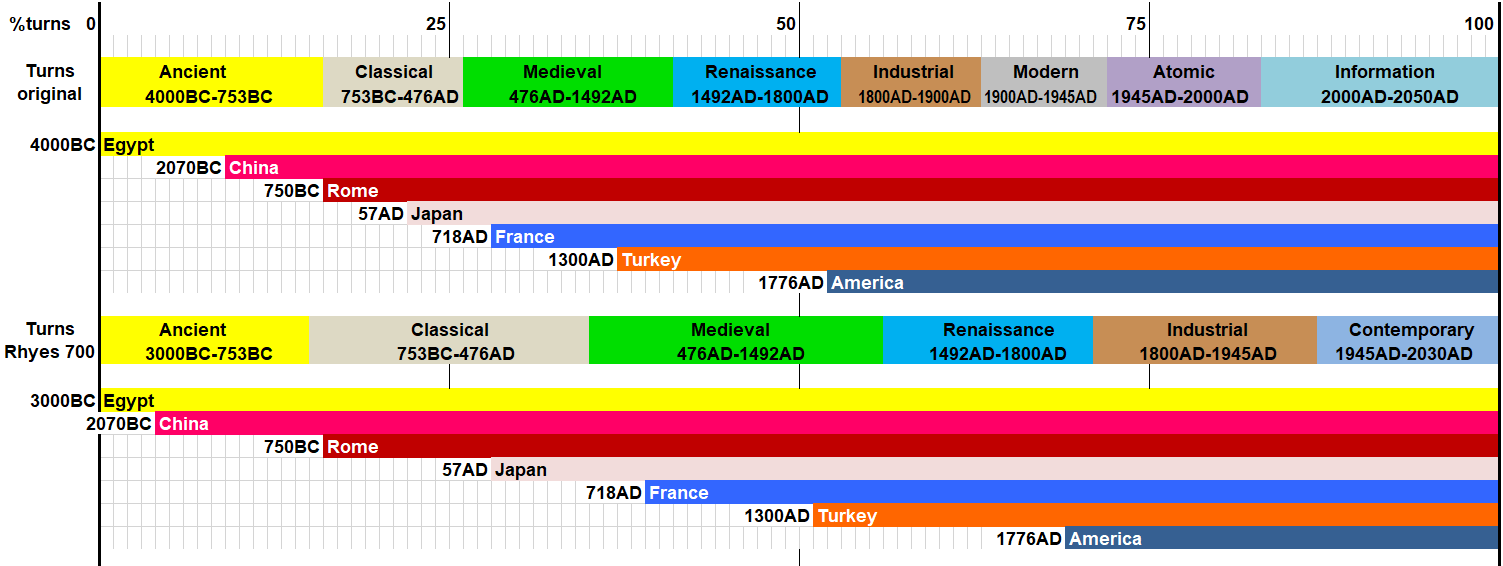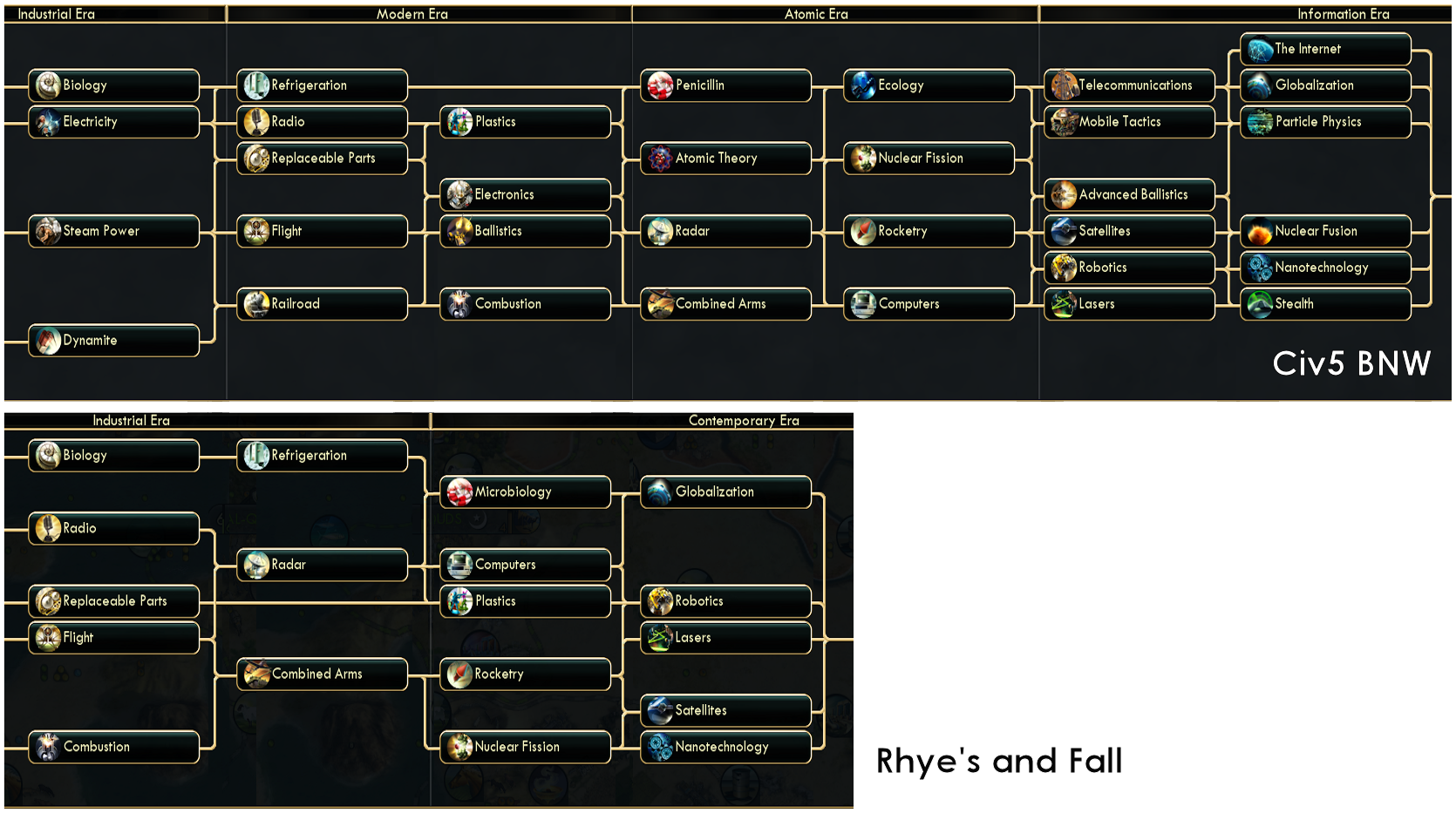New timeline extending Classical and Medieval eras
All versions of Civ since 1991 have always suffered of recentism, as a disproportionate amount of turns and techs is dedicated to modern times. This is somehow understandable given that the game is made by a company from the US, but in Civ5 BNW literally half of the game is set from Industrial time onwards.
The new timeline in Rhye’s and Fall addresses this problem. It’s 700 turns, spanning between 3000 BC to 2030 AD. Despite being longer, the actual amount of play depends on the starting year, so it might be much less than 700.
Special focus was given on Classical and early Medieval eras, which move on much more slowly (similar to the standard Epic game speed), while modern times have been shortened.

As a result, the Ancient Mediterranean takes advantage of the game assets at full potential and is reenacted with extreme realism, as Greeks, Romans, Phoenicians and others clash in order to control the Ancient World.
As a matter of fact, the game provides many ancient civs and medieval civs, and with Rhye’s style delayed spawns, they would appear all too soon. The new timeline spreads the assets more apart.
The actual time dedicated to play each era grows with the number of turns, as loading times increase and the time needed to manage units and cities explodes. This brings even further disproportions in the eras, which look more balanced in Rhye’s and Fall, as in the approximate calculation in the picture below:

Revised 6-eras tech tree
In Rhye’s and Fall, Industrial and Modern eras are merged into Industrial, and Atomic and Information eras are merged into the Contemporary era, from 1945 onwards.
The tech tree has been revised in this sense, adding important techs early in the game and shortening the later eras, which look more compact while preserving all existing units and buildings (except for X-Com and giant robots, which were kicked out).

One important mention is the Heavy Plough tech, which is what historically made European civs jump ahead in economy after 1000AD. In this mod, grasslands produce only 1 food at the beginning, making warmer climates more privileged, and areas like northern Europe unattractive. The Heavy Plough tech gives +1 food to grasslands, and helps later civs spawning in northern regions to catch up with already developed players. This reflects the impact of geography that has been discussed in books such as Guns, Germs and Steel.
 BACK BACK
|